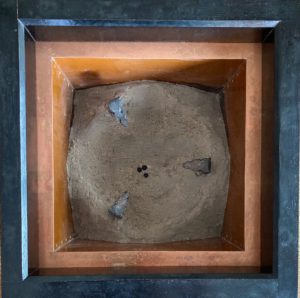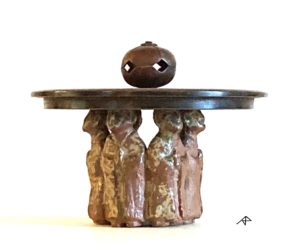Jizō and the Gotoku


Jizō is often depicted with a round bamboo, umbrella-shaped hat called an a-jiro gasa, 網代笠, woven-era-umbrella. It is fitted inside with a bamboo openwork ring called a go-toku, 五徳, five-virtues, (usually written in Katakana, ゴトク). It is most interesting to think that Jizō is so closely associated with the gotoku, five virtues of Buddhism. The devout wear such hats on their pilgrimages. Although they are made in various sizes, one of the standards has a diameter of 14 sun kane-jaku, the gotoku diameter is 6 sun kane. In Chanoyu, a similar hat or umbrella is used in the roji, and is called a ro-ji gasa, 露地笠, dew-ground umbrella; it does not have a gotoku, as it is only supported overhead by hand.

It might be imagined that the ash bed, especially in the ro, is like an inverted ajiro gasa, with its gotoku suggesting the iron gotoku in the hearth. Those who practice the Go-toku, 五徳, Five-virtues, of the Bodhisattva can enter the middle way, not just in thoughts and words. Practice is essential. The Five Virtues of a Bodhisattva are the compassion of Kannon Bosatsu, the righteous mind of Fugen Bosatsu, the mindful wisdom of Kokūzō Bosatsu, and the mental reverence of Monju Bosatsu, with the kindness of Jizō Bosatsu in the center, who serves the other four Bosatsu. Each of the five Bosatsu may be spiritually present in the Tearoom. In the Buddhist scriptures, the Five Virtues are called the five rational minds, which is to observe the appearance of one’s own mind.

